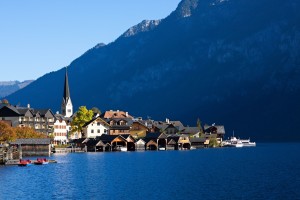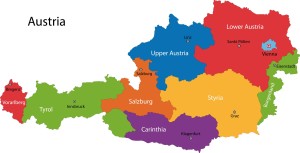Good things are happening in Austria–and they mean changes in the wine law! As of June 14, 2016, a series of updates and revisions to the existing Wine Law of 2009 were passed. The resulting changes are a bit far-reaching, but I’ll do my best to simplify them, and present them one concept at a time.
#1: Changes in the appellations of the Burgenland Quality Wine Region: The subregions of Neusiedlersee, Neusiedlersee-Hügelland, Mittelburgenland and Südburgenland have been eliminated. In the future, Qualitätswein produced in these areas will be labeled with the regional appellation of Burgenland.
The only remaining subregions of Burgenland are the four DACs: Neusiedlersee DAC, Leithaberg DAC, Mittelburgenland DAC or Eisenberg DAC.
#2: Change in the name of the Süd-Oststeiermark subregion of Steiermark: The Süd-Oststeiermark subregion of the Steiermark Quality Wine Region will now be known as Vulkanland Steiermark, in homage to its volcanic past.
#3: Planned recognition of outstanding single vineyard sites: Plans are in place to legally designate certain high-quality single vineyards. Once designated as such, a wine may pronounce this designation on the label by the use of the term “Ried” before the name of the vineyard. Ried (plural: Rieden) is a term unique to Austria and is not used in Germany.
#4: Further designations for the Kamptal, Kremstal and Traisental DACs: The wines of Kamptal, Kremstal and Traisental DACs will be further classified according to a three-tier quality ladder, beginning with Regional, and moving up to Village and Single Vineyard wines. Each step “up the ladder” will specify minimum alcohol content as well as other quality indicators.
#5: Changes in the use of the term Ausbruch: The term “Ausbruch” will now be considered synonymous with the term Trockenbeerenauslese, defined as a level of the Prädikat requiring a minimum 30° KMW with the majority of the grapes affected by botrytis. Even more newsworthy is the fact that the term will only be allowed to be used in connection with the wines of the city of Rust, making the term a protected indication for Ruster Ausbruch. No other wines may use the term.
#6: Changes in the laws concerning Austrian Sekt (Sparkling Wine): The new laws set out quality designations and strict regulations for Austrian sparkling with a designation of origin. These wines may be labeled as Austrian Sekt or Österreichischer Qualitätsschaumwein, and must specify one of the following quality terms: Klassik, Reserve, or Grosse Reserve. In the case of Klassik and Reserve wines, the region of origin many not be more specific than “Austria” (Österreich). In the case of Grosse Reserve wines, the region of origin may be a federal state and municipality or part of it and the term geschützte Ursprungsbezeichnung (Protected Designation of Origin) or g.U. Grosse Reserve wines will be allowed to be labeled as a single vineyard (Ried) wine. Each of the quality designations– Klassik, Reserve, and Grosse Reserve–will have an accompanying set of standards as to methods of production, lees aging, alcohol minimums and styles.
For much more information, see the Wines of Austria website.
post authored by Jane A. Nickles…your blog administrator
Are you interested in being a guest blogger or a guest SWEbinar presenter for SWE? Click here for more information!


